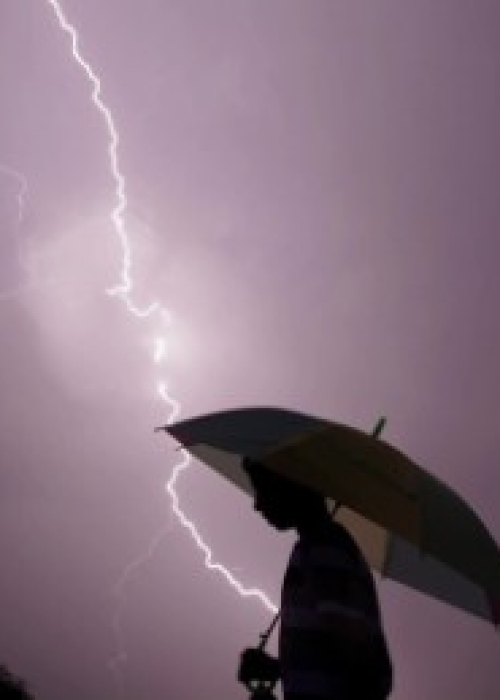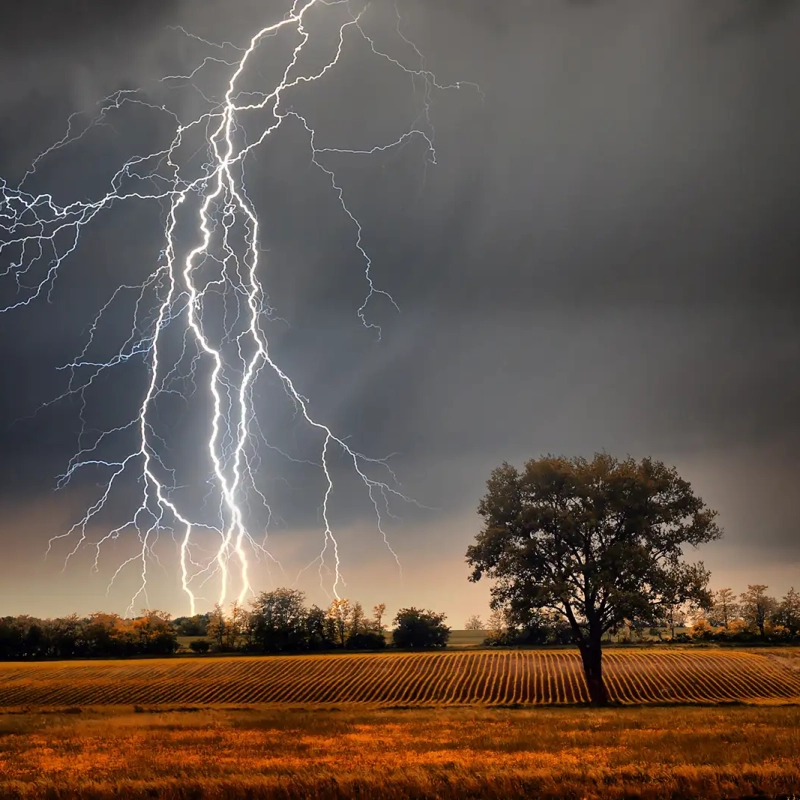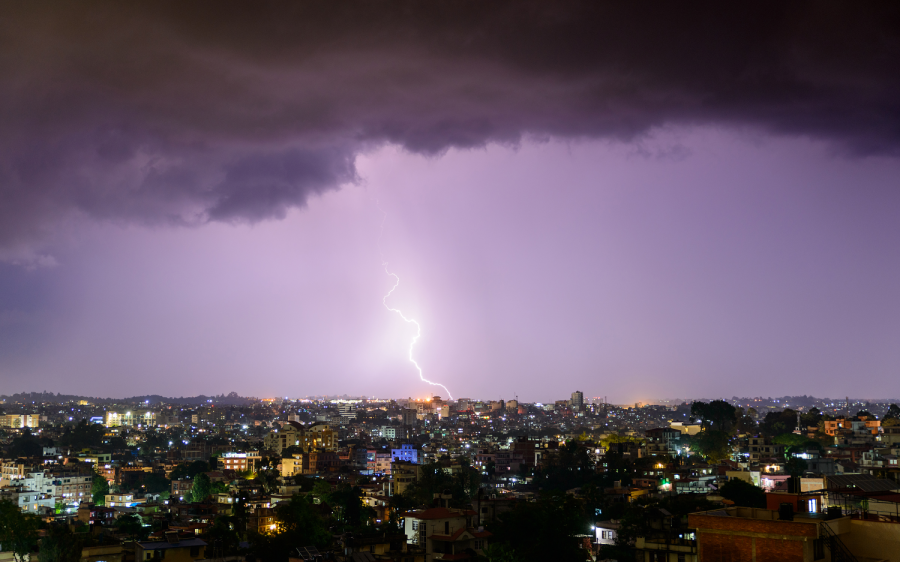Lightning
Join hands with us to empower communities for dignified lives
Lightning Disaster
Lightning is one of the major natural hazards in Nepal; it killed 94 people in 2019. This study has analyzed deaths, affected people, events, and economic losses by this hazard from 1971 to 2019. The distribution of events shows that the number of lightning events is increasing year by year. The distribution of lightning events and deaths varies within the country; however, there are some districts with repeated lightning fatality events. The findings of the study will be beneficial for government as well as other developmental organizations to redesign disaster risk reduction plans and policies at national and local levels.


Nepal is exposed to various types of natural disasters every year. The number of people losing their lives in disasters in the country is increasing every year.With the arrival of pre-monsoon, lightning’s deadly grip is taking the lives of many people. Lightning kills more people than any other disaster every year.
According to the Ministry of Home Affairs, lightning accounts for the highest number of deaths from disaster in Nepal.According to the National Emergency Operation Center, lightning has taken 8 lives and injured 15 in since April 13 this year 2020. According to the National Emergency Operation Center, more than 100 people die every year because of lightning.“Lightning is the gravest disaster killing more than any other disasters in Nepal,” KedarNath Sharma, the spokesperson of the Ministry of Home Affairs said. NEOC’s nine years record shows that 1,042 people have died and 2,056 have been injured of lightning from April 13, 2011 to April 27, 2020.Officials at NEOC say more than 24,000 people die of lightning across the world every year. The Chure and Mahabharat Hill ranges are highly vulnerable to lightning incidents, which mostly occur during pre-monsoon period. The available figures on lighting incidents and fatalities show districts like Makwanpur, Rukum (West), Dang, Udayapur and Ilam as highly prone areas to lightning incidents. The seven years data between 2011/12 and 2018/19 has recorded 773 deaths and 1,695 injuries due to thunder strikes, making it the second deadliest catastrophe in the country only after the 2015 earthquake that had killed nearly 9,000 people. The government in 2017 had set up nine lightning detection centres in Tumlingtar, Biratnagar, Simara, Bhairhawa, Kathmandu, Pokhara, Nepalgunj, Surkhet and Dhangadi. Operation of these stations, which would cover the entire country and gather data of incidents of lightning from all parts of the country, was also expected to contribute in mini-mising loss of lives in lightning incidents after identifying thunderstorm-prone zones. But lightning has continued to kill people nationwide.
“These stations cannot do anything more than few minutes of ‘now-casting’. We instead need to focus on precaution measures like staying inside when there is a thunderstorm, not to take shield under the tower or tall trees at such times to protect them from lighting strikes,” added Khanal. According to Khanal, the government has started awareness campaigns in districts which have been frequently hit by lightning in the past years. The government is planning to introduce provision in the building codes to have installed earthing systems or lightning protection systems at least in the public buildings like hospitals, schools, waiting lounges or places where large number of people gathers. Makwanpur is one of the lightning-prone districts in the country. As many as 75 people in the district have died due to lightning strikes in the past nine years; seven have died in the current fiscal year alone from Thingan and Gadhi. There is no effective plan in any rural municipality from Makawanpur in order to reduce the lightning cases. However often radio lightning awarenessprogramme has been conducted throughout the local FM during monsoon from District Disaster Management Committee and organizations.
Therefore, this is a concept note to design the project in order to mapping lightning scenario in the Makwanpur district and aware about lightning form loss of humans and livestock and prevent lightning disaster and save lives by install lightning arrester.
Objectives:
- To aware the community about lightning from loss of human and livestock by radio jingle and IEC materials.
- To prevent lightning disaster and save livelihood.


